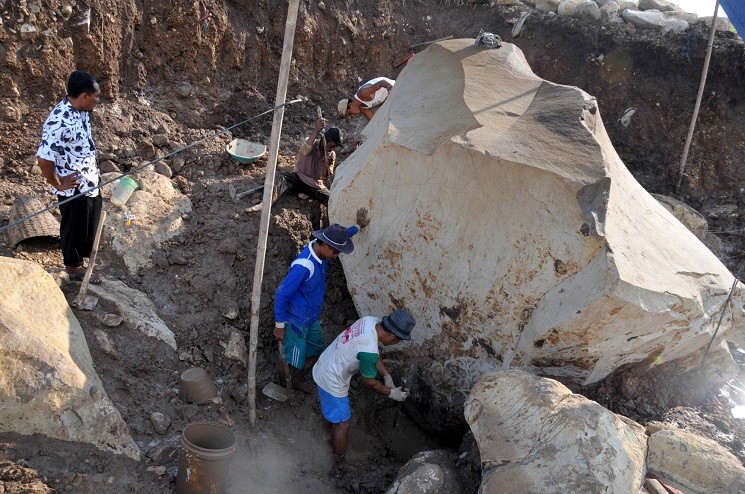Popular Reads
Top Results
Can't find what you're looking for?
View all search resultsPopular Reads
Top Results
Can't find what you're looking for?
View all search resultsPreservation agency prohibits excavation of unearthed temple
Change text size
Gift Premium Articles
to Anyone
T
he Central Java Cultural Heritage Preservation Agency (BPCB) is stopping local people from conducting excavations of the temple building structure found in Boyolali in March to protect the archeological site, on which the agency will conduct research this month.
The agency is arranging the preliminary reports and recommendations of follow-up research in April, meaning the site must be free from local people conducting excavations, BPCB official Gutomo said on Friday.
The temple structure site was found in a farming area in Dukuh Gunung Wijil in the village of Girirot in Ngemplak subdistrict, Boyolali, at the end of March. There had previously been several ancient relics around the site, including two ancient yoni statues (representing vaginas) and ancient bricks. The statues have been handed over to the Central Java BPCB.
The relics were found on farms belonged to local villagers Soleh and Sumarno.
Sumarno is still currently excavating the area where the archeological goods were found, despite being asked not to by the BPCB.
"People here are curious. I keep excavating slowly, to make sure I don't damage the site," Sumarno said.
Sumarno first found an ancient rock on the 1.2 hectares of land he owns on March. 9. Not far from the first rock location, he found the ancient statues and rock relief depicting King Janaka.
Sumarno immediately reported the finding to the Boyolali Statues Museum.
From the preliminary research by the BPCB, the two statues are thought to date to around 8 AD, Gutomo said.
"This is a Nandeswara statue, but we have not identified the other one. It could be Mahakala, but we are not sure yet. We are going to conduct more research," he said.
Bricks were widely used for the construction of templesduring the moving of the ancient Hindu Mataram Kingdom in Central Java to East Java.
Temples in Central Java, Gutomo said, usually used bricks as building foundations, such as Sewu Temple in Prambanan, Klaten, Central Java, whereas other temples usually used rocks.
The finding is the first time a temple structure has been found in Ngemplak; previous archeological findings in Boyolali have mostly been found in Mojosongo and Banyudono.
"Boyolalali is a location that sees a lot of Hindu-era findings. We suspect that the findings in Ngemplak are related to other findings in Mojosongo and Banyudono," he said. (rin)










